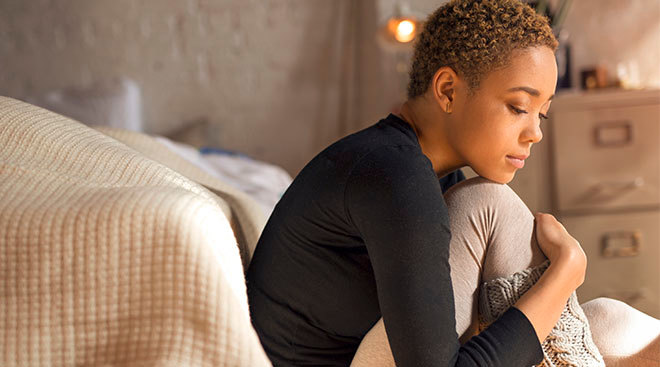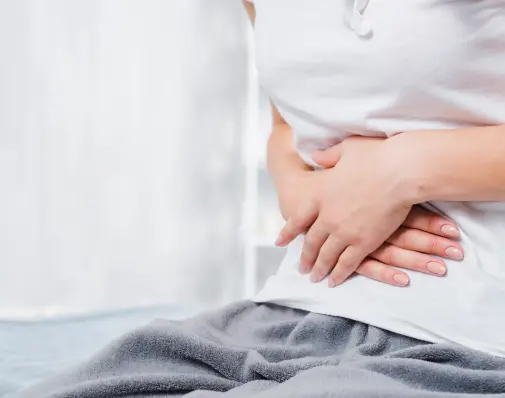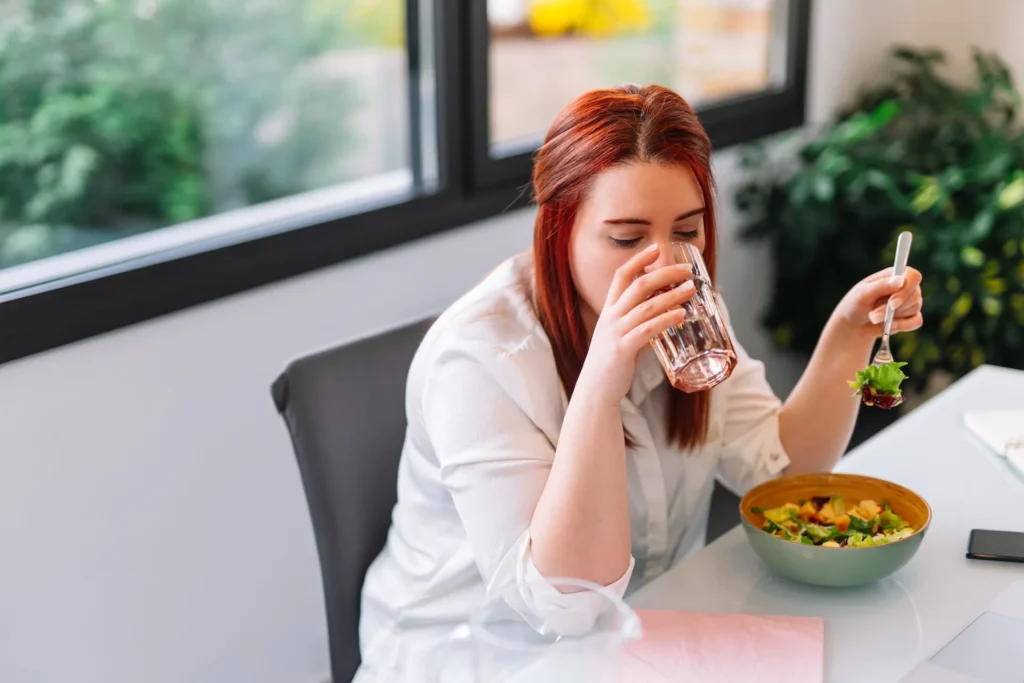Ovulation pain often appears as a sharp or dull ache on one side of the lower abdomen, and many women experience it without fully understanding what the sensation reveals about their reproductive health.
Pain during ovulation can serve as a natural signal that the body is fertile, but it can also highlight disruptions that may affect conception. Paying attention to these sensations creates an opportunity to understand the menstrual cycle more deeply and recognize early signs of possible reproductive challenges.
Here, we will explore what painful ovulation says about fertility.
What is ovulation pain?
Ovulation pain, also known as Mittelschmerz, refers to the discomfort some women feel when the ovary releases an egg. The pain usually occurs on either the right or left side of the lower abdomen, depending on which ovary releases the egg during that cycle.

A lot of women say it feels like a dull pain, or a cramp-like strain that lasts anywhere from a few minutes to several hours. Sometimes, the pain may last for a whole day. Ovulation pain is usually minor, but it can get worse when follicles enlarge or when fluid from the torn follicle irritates adjacent tissues.
Recommended: Is It Normal to Have Pain During Ovulation? When to Worry
Mittelschmerz is common and usually not dangerous, but knowing how it feels and when it happens can help you understand how your body ovulates. It can assist find fertile windows and show possible problems if the pain gets too bad, lasts too long, or comes with additional symptoms.
Causes of Painful Ovulation
Mild discomfort is a common component of the menstrual cycle, but some things can make it worse. Knowing these causes makes it easier to understand what the body might be trying to tell you about your reproductive health.
1. Growth and Breaking of Follicles
The ovarian follicle expands and stretches the surface of the ovary before the egg is discharged. This stretching can make you feel tense and uncomfortable. When the follicle breaks apart to let the egg out, it releases a little amount of fluid or blood, which can irritate nearby tissues and produce short-term pain.
2.Changes in Hormones
Changes in the levels of estrogen and luteinizing hormone (LH) levels get the body prepare for ovulation. Changes in hormones can make the pelvic area more sensitive, which might make ovulation more painful and apparent at times.
3. Cysts in The Ovaries
Functional cysts, such follicular or corpus luteum cysts, can happen when the ovary does not release the egg correctly. These cysts can make ovulation more painful or uncomfortable, especially if they get bigger or break.
4. Endometriosis
Endometriosis occurs when tissue that is like the lining of the uterus grows outside of the uterus. This illness can cause a lot of pain in the pelvic area, especially when the ovaries are enlarged and sensitive during ovulation.
5. Pelvic Inflammatory Disease

PID is a disease that affects the organs that help you have babies. It could make the pelvis swell, scar, and become more sensitive, which could make ovulation more painful than usual.
Recommended: Ovulation Pain vs Period Cramps: How to Tell the Difference
6. Scar Tissue and Adhesions
Scar tissue may grow around the ovaries or fallopian tubes as a result of past procedures or infections. This can make it harder to move about during ovulation and make the pain worse.
7. More Pain Sensitivity
Some women are inherently more sensitive to changes in their pelvis. In certain instances, ovulation pain may be more intense even in the absence of any underlying medical problem.
Does Ovulation Pain Indicate Good Fertility or Reproductive Issues?
Ovulation pain can tell you a lot about your reproductive health, but how you interpret it depends on how bad it is, how long it lasts, and how often it happens. Ovulation pain is often a symptom of a normal and healthy ovulatory process, but it can also be an indication of problems that need to be rectified. Knowing these differences can help you understand what your body could be trying to tell you.
1. When Pain During Ovulation Means You Can Get Pregnant
If you feel mild to moderate pain around the middle of your menstrual cycle, it could mean that your ovary is releasing an egg. The elongation of the follicle, the rise in hormones, and the release of fluid can all cause short-term pain. If this pain happens every cycle, it could mean that you are ovulating regularly. Regular ovulation is a significant sign of healthy fertility, and many women who feel Mittelschmerz have no trouble getting pregnant.
Recommended: Painful Ovulation (Mittelschmerz): Causes, Symptoms, and How to Find Relief Naturally
2.When the Egg Comes Out Pain Could Mean That There is an Issue With Reproduction.
Severe, sharp, or long-lasting pain could be a sign of problems that could affect fertility. Endometriosis, ovarian cysts, pelvic inflammatory disease, or adhesions can all make ovulation pain worse. These abnormalities could hinder eggs from being released, harm reproductive tissues, or make it harder for fertilisation to proceed. If your pain gets worse over time, changes from the mid-cycle pattern, or comes with symptoms like heavy bleeding, fever, or nausea, you should see a doctor.
3. Pain Alone Does Not Determine Fertility
Having pain during ovulation doesn’t indicate you’re fertile or not immediately away. Many women who can get pregnant have very painful ovulation, however some women do not feel any pain at all and nevertheless ovulate normally. The most essential thing is to pay attention to the pattern and any other signs that go along with it. Most of the time, pain that is expected and goes away quickly is not hazardous. If it becomes irregular or unpleasant, it could be a sign of a more serious reproductive issue.
4. Looking at The Body Offers You a Better Picture of What’s Going on.
If you keep track of your ovulation pain along with your menstrual cycles, changes in cervical mucus, or ovulation test results, it might help you figure out if the pain is typical or a sign of an imbalance. This information helps people make better decisions about their reproductive health and fertility.
Signs that ovulation pain could be serious
Most of the time, ovulation pain is not too bad and goes away fast. But if you experience any of these symptoms, you should consult a doctor immediately once. If you know these indicators, you can determine the difference between typical mid-cycle discomfort and pain that is caused by problems with your pelvis or reproductive system.

1. Pain that is Really Intense or Makes it Hard to do Activities
If you are in a lot of pain that makes it hard to stand or do ordinary things, or if it makes you lie down, it could be an indication of an ovarian cyst, endometriosis, or a cyst that has broken. Ovulation that happens normally doesn’t hurt too much.
Recommended: 10 Causes of Spotting During Ovulation
2. Pain That Doesn’t go Away After a Day or Two
Most of the time, the pain from ovulation goes away in a few hours. If your discomfort lasts longer than a few days or grows worse over time, it could be a sign of inflammation, an infection, or hormone abnormalities that need to be checked out.
3. Pain That Accompanies With a Fever, Chills, or Feeling Sick
Ovulation does not cause fever or systemic symptoms. Pelvic inflammatory disease, ovarian torsion, or any major health problem could be the source of pain that accompanies with fever, vomiting, or chills.
4. Bleeding That Isn’t Typical or Spotting That is Too Heavy
You might have light spotting when you ovulate, but if you bleed for a long period or have spotting that is much thicker than normal in the middle of your cycle, it could be an indication of hormonal abnormalities, a cyst breaking open, or fibroid activity.
5. Pain That Comes And Goes or Happens at Periods Other Than The Middle of The Cycle
Ovulation pain usually arises in the middle of the cycle and only on one side. If you have pain that comes and goes at random times, varies without warning, or does not follow the usual monthly cycle, it could suggest that your reproductive or digestive systems aren’t working well.
6. Pain During Sex or When Going to The Toilet
Endometriosis can make intercourse or going to the toilet painful, especially when it happens with ovulation pain. If this problem is not treated, it can have a huge effect on being able to get pregnant.
7. Pain and Strange Discharge From the Vagina
If you experience unusual discharge, especially if it smells awful or causes your pelvis itch or ache, you can have an infection such pelvic inflammatory disease. This can make it hard to have babies later on.
8. A History of Infections or Surgeries in The Pelvic Area in The Past
Women who have had vaginal infections, surgeries, or adhesions in the past may feel more pain when they ovulate. If you have discomfort that won’t go away, it could mean that your organs or scar tissue are inflamed.
Reommended: When to Take Ovulation Tests After Period
Managing Painful Ovulation
Managing painful ovulation involves understanding the body’s signals and adopting strategies that reduce discomfort while supporting reproductive health. Although mild ovulation pain is common, effective management can make the experience more comfortable and help identify when further medical attention is necessary.
1. Warm Up Your Lower Belly
A heating pad or warm compress can help with cramps and stress by relaxing the muscles in your pelvis and improving blood flow. This method works best when the pain is mild to moderate.
2. Take Painkillers That Don’t Need a Prescription
Over-the-counter drugs like ibuprofen and acetaminophen can help with pain and swelling. Follow the instructions on the package when taking these drugs. If you need to take them often, talk to a doctor.
3. Drink Enough Water And Eat a Balanced Diet.

Eating anti-inflammatory foods like fruits, vegetables, whole grains, and healthy fats, as well as drinking enough water, can help lower pelvic tension and keep hormones in balance. Limiting processed foods and too much salt may also help reduce bloating during ovulation.
Recommended: Will an Ovulation Test Be Positive If Pregnant?
4. Keep Track of Your Period
Cycle monitoring applications, basal body temperature, or cervical mucus patterns can help you figure out when you could be in pain. Knowing this helps you get ready better and makes you less anxious about unanticipated pain.
5. Do Some Light Exercise
Walking, stretching, or doing yoga are all examples of light exercise that can improve circulation and release endorphins, which naturally soothe pain. Gentle exercise may also help relax and alleviate pelvic stiffness.
6. Try Ways to Relax
Meditation, breathing exercises, and warm baths can all help you relax and lessen your stress levels. Less stress may help the menstrual cycle stay regular and make ovulation pain less severe.
7. Talk to a Doctor About Your Hormonal Balance
If the pain during ovulation gets worse or is hard to predict, a doctor might evaluate hormone levels and suggest a treatment. Hormonal abnormalities can make ovulation more uncomfortable. Fixing these problems can make you more comfortable and help you get pregnant.
8. Get Help For Any Other Health Problems You May Have
Endometriosis, ovarian cysts, and pelvic inflammatory disease are some of the conditions that can make ovulation very painful. To avoid long-term problems and keep your reproductive health in good shape, you need to get diagnosed and treated quickly.
Final Thoughts
Painful ovulation can tell you a lot about your reproductive health, but you need to pay attention to what your body is trying to tell you. A typical ovulatory process might cause mild and constant pain, which may suggest that the body is regularly releasing an egg. But pain that is strong, odd, or lasts a long time can be an indication of problems that can affect fertility if they are not handled. Paying attention to when your period starts, how bad it is, and other symptoms that come with it can help you understand it better and be more conscious of it.
By keeping an eye on these patterns and obtaining medical treatment when they need it, women may better safeguard their reproductive health and make sensible choices regarding their fertility. Do not overlook pain during ovulation, but it does not imply there’s a problem straight away. If you know what to look for and take care of it, it might be a good sign of overall health and fertility.
